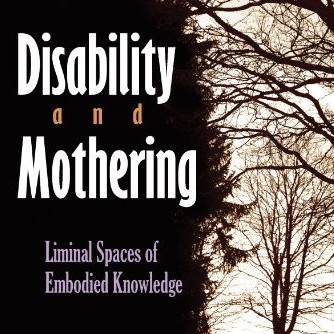The Concept of Choice as Phallusy: A Few Reasons Why We Could Not Agree More
On May 24, 2011, in a speech to celebrate the signing of the state’s Abortion-Sonogram Law,1 Texas Governor Rick Perry made an astute observation about abortion: “For many that are dealing with . . . an unexpected pregnancy, the concept of choice can really be a fallacy” (Perry). Three feminist rhetoric scholars agreeing with such a statement might be surprising, but that is the impetus for this essay.
When Perry spoke these words, he unintentionally echoed the many feminist rhetoricians who have said about abortion in recent years that choice is indeed a fallacy. That is, to quote a dictionary definition of “fallacy,” the notion of choice is “a deceptive, misleading, or false notion, belief, etc.” (“Fallacy”). For Perry, the fallacy lies in women’s lack of understanding of their own bodies and personal needs. We suggest that, instead, by arguing against the concept of choice, Perry reappropriates “choice” into a paternalistic frame that subjects the abortion-seeking woman to increasingly strict regulations and constraints on her decision making ability. In so doing, he commits his own “phallusy,” asserting his male privilege to “protect” women from their fallacious choices.
Using Perry’s “phallusy” as an example, we demonstrate that much of the current antiabortion rhetoric silences women’s voices by co-opting “choice.” We first situate Perry’s language within the historical context of Roe v. Wade and in relation to other recent examples of state legislation. Next, we juxtapose these masculine ways of framing abortion with women’s narratives that suggest different forms of rationality. Here, we do not suggest that all men and all women frame abortion in different, gender-specific ways, of course; rather, we contrast traditionally defined “masculine ways”—articulated by men and women—of framing against specific women’s narratives. Finally, we argue that abortion discourse on all sides has been too rational and, more importantly, that this rationality has been defined in a male-oriented way.
The History and Fallacy/Phallusy of Choice
Roe v. Wade was a major abortion rights victory, and its basic premise that the state cannot declare when life begins remains intact. But it has been challenged. In fact, as we approach Roe v. Wade’s fortieth anniversary, we have just lived through a year, 2011, in which states passed a record number of antiabortion laws.2 In this current legislation, we see two trends: (1) direct targeting of Roe v. Wade’s principles, such as Mississippi’s attempted “fetal personhood” amendment (Blake), and (2) indirect targeting through laws that enforce restrictions on women’s access, similar to Texas’s Abortion-Sonogram Law. Although such restrictions do not seek to overturn Roe v. Wade, they minimize abortion access.
This is why we agree with Perry’s statement that for women “dealing with an unexpected pregnancy,” the “concept of choice can really be a fallacy.” Never, since Roe v. Wade, have women’s reproductive choices been more narrowly circumscribed or vulnerable; it is indeed a fallacy and a “phallusy” to perpetuate the notion that US women have the control over reproduction that is implied by the term “choice.”
How did this happen?
Rhetoric scholars who have studied abortion offer explanations. Celeste Condit’s historical study, which highlights how US abortion rhetoric changed in the years just prior to and just after Roe v. Wade, is perhaps the most significant, but other studies also illuminate the difficulties of the pro-choice stance (see, for example, Hayden; McCarver; Swift).3 As Hayden suggests, abortion advocates have failed to connect the ideograph to anything quite as compelling as the fetus images employed by those who mobilize around the ideograph (112).
In the current context, “informed choice” is being insidiously co-opted by advocates of state laws that regulate the information that physicians must communicate to abortion patients. In Texas, for instance, the Woman’s Right to Know act requires a woman to receive a brochure that shows images of the fetus at various stages and then wait at least 24 hours before the abortion.4 Perry’s Abortion-Sonogram Law intensifies this requirement and co-opts notions of informed choice as a justification. As Perry’s speech explained, “This important bill will ensure that every Texas woman seeking an abortion has all the facts about the life she is carrying and understands the devastating impact of such a life changing decision” (Perry).
Toward an expanded rationality
Looking more closely at the gendered dynamics in antiabortion rhetoric sheds additional light on this co-optation of choice. Note, for example, the visual rhetoric of the official photograph of Perry’s celebratory speech.
Fig. 1. An official photo from the speech that Gov. Rick Perry delivered on May 24, 2011, to celebrate the passage of the Abortion-Sonogram Law (Perry).
Although women were present, none of them spoke during the event. But the Texas legislators standing next to Perry did get to speak. The gendered dynamics are troubling in the context of the legislation being celebrated. Underlying the Abortion-Sonogram Law are three claims: (1) that abortion clinics purposefully withhold important knowledge from women; (2) that women seeking abortions possess no legitimate knowledge about their own bodies, pregnancies, and choices; and (3) that women seeking abortions are not thinking “rationally” about their decision. Although language such as “informed choice” or “women’s right to know” might suggest that lawmakers are imbuing women with empowering wisdom, women’s rights are, instead, restricted. A woman is not given the choice to view these materials and make an informed decision; she is required by law to receive particular kinds of information or to view a sonogram while being offered a particular explanation and to delay action while she reads and (re)considers her decision. Just like the women who stood by and listened to Perry’s speech, the abortion-seeking woman is silenced as her perspective is dismissed as irrelevant.
The silencing of women is not always this obvious, however; sometimes it is enacted more subtly. For example, the texts cited as sources in Roe v. Wade were all authored by males, and the interpretations of these texts were also carried out predominantly by males.5 Thus, the authors of Roe v. Wade admit that “we need not resolve the difficult question of when life begins” (Roe); however, it is never suggested that pregnant women might have relevant knowledge. Rather, whenever the possibility of more certain knowledge is mentioned, the knowers are presented as experts who exist apart from the pregnant woman and who may or may not have the potential to become pregnant: “When those trained in the respective disciplines of medicine, philosophy, and theology are unable to arrive at any consensus, the judiciary, at this point in the development of man’s knowledge, is not in a position to speculate as to the answer” (Roe, emphasis added).
Thus, even the most “rational” pro-choice statements are products of disembodied masculine discourse. Such discourse represents only one narrow approach to rationality. Other forms of discourse are made to fit within this logic, or they are dismissed as irrational. As feminist rhetoricians have observed, these narrow definitions of rationality have long served to deny women the same rights that men have taken for granted (see, for instance, texts by Campbell; Flynn; Glenn; Jarratt; Ratcliffe).
In other words, the language of Roe v. Wade circumscribes rationality to specific types of knowers, to those who might help the pregnant woman interpret the medical, philosophical, and spiritual aspects of her condition but who need not have the capacity to experience that condition. Rarely in this discourse—from ancient times to the present—do we find official records of women’s narratives on what it feels like to be pregnant or to end a pregnancy. For example, when Rick Perry claims in his celebratory speech that he is acting in support of life so that “12,000 new Texans will be born,” he is using an emotional plea (Perry). But such a claim only represents one emotion, and it seems that is the only emotion allowed in this debate.6 Indeed, the only emotional discourse sanctioned in this debate is that of (mostly male) rhetors who have come to agree “rationally” that the fetus is a “life” that needs to be saved. What about the emotions of the woman who does not want the pregnancy? What about the emotions of the woman who carries to term and then gives the baby up for adoption? What about the ambivalence that some women feel about pregnancy? Maybe we need a more emotional discourse with a wider variety of emotions granted credibility. And maybe we need a wider definition of what counts as rational discourse.
Of course, both women and men have been key players on both sides in the abortion controversy, and the pro-choice and antichoice divide does not always follow female-male gender divisions. But our point is more subtle: that the terms of the debate have been defined in a way that does not allow that the abortion patient herself might make a rational contribution. Even the word “abortion” derives from the Latin abortus, which can be translated literally as “to prevent from coming into being” (“Abortus”). Thus, the very term that we use is embedded with the suggestion that a being is being brought to an end—and that that doesn’t require debate or consideration of the being (woman) who might bring this being (fetus) into being.
Alternative Rhetorical Spaces
Although they are rare, some rhetorical spaces now exist in which women narrate their abortion experiences.7 In these spaces, we get a glimpse at some possibilities for a different rationality. For example, I Had an Abortion is a fifty-five-minute video by Gillian Aldrich and Jennifer Baumgardner. The 2005 film presents firsthand accounts of ten women who had abortions. It opens with a woman who says, “You never hear anybody saying ‘I had an abortion’” and by explaining how these women had felt the need to keep their stories secret (I Had).
The first woman to tell her story is eighty-six-year-old Florence Rice, who had an illegal abortion in 1938. Her story is introduced with a text-only screen that reports, “In 1930, abortion was the listed cause of death for 2,700 women” (I Had). Florence then tells how the abortion was conducted by a supportive physician and was unproblematic; however, she later ended up in Harlem Hospital because of an infection, and she says the nurses were “very nasty” to her (I Had). Florence recovered, and she said she has never had any regrets. In Florence’s story we begin to see the possibility of a new rationality. When we think of “abortion” in a world before Roe v. Wade, through Florence’s narrative, we see that if it is unsafe and illegal, then “abortion” can also mean an end to a woman’s life or health, not just the end of a pregnancy.
In the more recent stories, we see additional forms of rationality that have been excluded from the abortion debate. For instance, Gloria Steinem tells of having an abortion in London in 1957. In London at that time a woman could have a legal abortion if two physicians would attest that her life was at risk. In Steinem’s words, we see an emphasis on new beginnings, which is a sharp contrast to the emphasis on endings that is embedded in the very term “abortion.” As Steinem says, “I did not see any way that I could give birth to someone else and also give birth to myself” (I Had). This alternative rationality is further developed when she recounts what the physician said to her before the procedure: “You must promise me two things: never to tell anyone my name and that you will do what you want with your life” (I Had). This example is noteworthy because Steinem is reporting language spoken by a male, underscoring our point that an alternative rationality for abortion does not need to be gender-specific, that the forms of rationality we characterize as masculine are not always spoken exclusively by men. Further illustrating this emphasis on new beginnings, Steinem concludes, “That was the first time I had taken responsibility for my own life, the first time I hadn’t been passive” (I Had). Other women in the video echo Steinem’s comments, saying, for instance, “I was so relieved. I felt like my life was beginning over again” (I Had).
Clearly, when we consider these women’s voices in contrast to the predominantly male voices that have shaped abortion rhetoric, we see dramatic differences. Not only have their stories been excluded, but also when these women tell their stories, it forces us to question the terms of this debate—particularly the emphasis on endings that is implicated in the term “abortion.” If we can continue to open up new rhetorical spaces that enable a wider definition of rationality, this might eventually offer new perspectives on Perry’s antichoice language. When we view his language in this historical context, not only do we see that the debate has been framed by a male rationality, but we might also see possibilities for reframing.
Conclusion
Viewed in historical context, the current attempt by conservative legislators to co-opt “choice” might be seen as the latest evidence that the abortion debate is framed within a narrow form of rationality that has too often excluded women’s perspectives and knowledge. Paying attention to the different rationalities that emerge in women’s stories might be the starting place for a richer understanding of what it means to speak rationally about abortion and, ultimately, to transforming the rhetorical space of abortion. One day we might even imagine a world in which middle-aged men in cowboy hats are not the people most qualified to speak about women’s reproductive capacity, their information needs, and their well-being.
Endnotes
- This law requires physicians to show and explain the ultrasound image to a woman and to force her to hear the fetal heartbeat before she can have an abortion. The law includes a provision for women who have been raped, assaulted, or abused; if she is willing to sign an affidavit attesting to that status, she will be excused from these new information requirements and can be on her way to pregnancy termination much more quickly than the ordinary woman who ends up at the abortion clinic as a result of choices she has made all by herself (“Woman’s”). return
- Evidence of these attacks can be found in many news sources. A report from the Guttmacher Institute notes, “In the first six months of 2011, states enacted 162 new provisions related to reproductive health and rights. Fully 49% of these new laws seek to restrict access to abortion services, a sharp increase from 2010, when 26% of new laws restricted abortion” (“States”). The report goes on to list and categorize these provisions under “Counseling and waiting periods,” “Gestational bans,” “‘Heartbeat’ bill,” “Banning abortion coverage in new insurance exchanges,” and “Medication abortion.” Moveon.org provides a cited overview of proposed legislation from 2011 including attempts to redefine “rape” as “forcible rape,” bills that permit hospitals to refuse a woman an abortion even if her life is at immediate risk, massive cuts to federal and state funding of Planned Parenthood, and removal of all funding for the federal family planning program (“Top”). return
- McCarver’s article is especially useful for the manner in which she complicates notions of choice as they are typically employed by both feminists and antifeminists. Her focus in the article is on conflicting responses (feminist and antifeminist) to Sarah Palin’s vice presidential candidacy. McCarver’s arguments about the difficulties with the concept of choice in relation to feminist rhetoric, however, are relevant to our point in this article. Hayden’s article also illuminates the difficulties with the concept of choice as a framework for proabortion arguments. Her focus is on the National Organization for Women’s 2004 “March for Women’s Lives” in which activists tried to shift the frame of the abortion debate by expanding the notion of choice to encompass more than just abortion rights. Swift’s article, which we later discuss in more detail, offers a rhetorical analysis of the controversial “I had an abortion” T-shirt that Planned Parenthood started selling in 2004 just before the “March for Women’s Lives.” return
- The brochure contains an inconsistent mix of scientific information and conjecture all presented as facts. For instance, the medical/scientific terms “embryo” and “fetus” are defined in terms of the age of the “unborn child,” a term clearly aligned with particular religious and cultural beliefs and values. “Unborn child” is the only term used throughout the rest of the document. Additionally, a bulleted list of features is provided for every two weeks of gestation. At twenty weeks, the first bullet point declares, “Some experts have concluded that the unborn child is probably able to feel pain” (“Woman’s” 5). Other points include the length (six to seven inches), and the appearance of eyebrows and lashes. Here again, then, proven scientific information is given the same valuation as a vague conclusion drawn by unnamed and un-cited “experts” (“Woman’s” 5). return
- For example, the Constitution, numerous prior legal decisions, ancient and modern medical texts and journals, and religious documents (Roe). return
- Female politicians, such as Sarah Palin and Michelle Bachmann, have also been vocal supporters of antiabortion legislation, but they echo this same approach, at times also capitalizing on their own wholly positive pregnancy/mothering experiences (see, for example, “Sarah”; Tenety). return
- For more discussion of these alternative spaces, see Swift’s article on the rhetorical situation of Planned Parenthood’s “I had an abortion” T-shirt and video. The narratives that we discuss here are from the “I had an abortion video” that is highlighted in Swift’s article. Other examples of rhetorical spaces in which women are speaking alternative rationalities on abortion include My Abortion. My Life., RH Reality Check, I Had an Abortion, Abortion Stories (from Preterm), and the recent opinion piece “No One Called Me a Slut” in the NYTimes. return
Works Cited
- “Abortus.” Wiktionary. 14 May 2012. Web. 16 May 2012. <http://en.wiktionary.org/wiki/abort#Etymology>.
- Blake, Aaron. “Mississippi Antiabortion Personhood Amendment Fails at Ballot Box.” Washington Post 9 Nov. 2011. Web. 4 Jan. 2012.
- Campbell, Karlyn Kohrs. “Consciousness-raising: Linking Theory, Criticism, and Practice.” Rhetoric Society Quarterly 32.1 (2002): 45-64. Print.
- Condit, Celeste. Decoding Abortion Rhetoric: Communicating Social Change. Champaign: U of Illinois P, 1994. Print.
- “Fallacy.” Dictionary.com Unabridged. 2012. Web. 3 Jan. 2012.
- Flynn, Elizabeth A. Feminism Beyond Modernism. Carbondale: Southern Illinois UP, 2002. Print.
- Glenn, Cheryl. Unspoken: A Rhetoric of Silence. Carbondale: Southern Illinois UP, 2004. Print.
- I Had an Abortion. Dir. Jennifer Baumgardner and Gillian Aldrich. Women Make Movies, 2005. Vimeo. July 2012. Web. 23 Sept. 2012. <https://vimeo.com/44870520>.
- Hayden, Sara. “Revitalizing the Debate between <Life> and <Choice> : The 2004 March for Women’s Lives.” Communication and Critical/Cultural Studies 6.2 (2009): 111-31. Web. 9 Sept. 2011.
- Heath, Susan. “No One Called Me a Slut.” The New York Times. The New York Times Company. Newspaper. 14 Apr. 2012. Web. 23 Sept. 2012.
- Jarratt, Susan C. Rereading the Sophists: Classical Rhetoric Refigured. Carbondale: Southern Illinois UP, 1991. Print.
- McCarver, Virginia. “The Rhetoric of Choice and 21st-Century Feminism: Online Conversations About Work, Family, and Sarah Palin.” Women’s Studies in Communication 34 (2011): 20-41. Web. 8 Sept. 2011.
- Perry, Rick. “Gov. Perry: Sonogram Legislation Helps Prevent the Tragedy of Abortion.” Press Release. Office of the Governor Rick Perry, 24 May 2011. Web. 8 Dec. 2011. <http://governor.state.tx.us/news/press-release/16168/>.
- Ratcliffe, Krista. Rhetorical Listening: Identification, Gender, Whiteness. Carbondale: Southern Illinois UP, 2005. Print.
- Roe et al. v. Wade. 410 US 113. Supreme Court of the US. 1973. FindLaw: Cases and Codes. FindLaw, 1994-2012. Web. 8 Dec 2011. <http://caselaw.lp.findlaw.com/scripts/printer_friendly.pl?page=us/410/113.html>.
- “Sarah Palin Remarks on Pro-life Agenda.” C-Span Video Library. C-Span, 14 May 2012. Web. 23 Sept. 2012.
- “States Enact Record Number of Abortion Restrictions in First Half of 2011.” Guttmacher Institute. Guttmacher Institute, 13 July 2011. Web. 3 Jan. 2012. <http://www.guttmacher.org/media/inthenews/2011/07/13/index.html>.
- Swift, Crystal Lane. “‘I Had an Abortion’: The Rhetorical Situation of a Planned Parenthood T-Shirt.” Qualitative Research Reports in Communication 8:1 (2007): 57-63. Web. 9 Sept. 2011.
- Tenety, Elizabeth. “Michele Bachmann: Miscarriage Solidified Antiabortion Stance.” Washington Post 30 June 2011, Under God Blog. Web. 23 Sept. 2012.
- “Top 10 Shocking Attacks from the GOP’s War on Women.” MoveOn.org. MoveOn.org Political Action, n.d. Web. 3 Jan. 2012. <http://pol.moveon.org/waronwomen/>.
- “US Teenage Pregnancies, Births, and Abortions: National and State Trends and Trends by Race and Ethnicity.” Guttmacher Institute. Guttmacher Institute, Jan. 2010. Web. 3 Jan. 2012.
- “A Woman’s Right to Know.” Texas Department of State Health Services. Texas Department of Health, 2 July 2012. Web. 23 Sept. 2012. PDF file.






 Amy Koerber is an associate professor of communication and rhetoric at Texas Tech University and editor of the journal Technical Communication Quarterly. Koerber’s articles on the medical rhetorics of infant feeding and related subjects have appeared in Women’s Studies in Communication, Journal of Medical Humanities, Journal of Business and Technical Communication, and Health Communication. Her book Breast or Bottle?: Contemporary Controversies in Infant-Feeding Policy and Practice is forthcoming with University of South Carolina Press.
Amy Koerber is an associate professor of communication and rhetoric at Texas Tech University and editor of the journal Technical Communication Quarterly. Koerber’s articles on the medical rhetorics of infant feeding and related subjects have appeared in Women’s Studies in Communication, Journal of Medical Humanities, Journal of Business and Technical Communication, and Health Communication. Her book Breast or Bottle?: Contemporary Controversies in Infant-Feeding Policy and Practice is forthcoming with University of South Carolina Press.  Amanda K. Booher is an assistant professor at Texas Tech University, where she teaches undergrad courses in technical communication and grad courses from various theoretical approaches (rhetorical, technological, feminist, cyborg, etc). Her research is primarily concerned with lived experiences of bodies, constructions of bodies (biologically, socially, culturally, rhetorically), and the relationships of bodies and technologies/prosthetics. Within this, she also considers issues of disability, sports, and gender politics, and bioethics.
Amanda K. Booher is an assistant professor at Texas Tech University, where she teaches undergrad courses in technical communication and grad courses from various theoretical approaches (rhetorical, technological, feminist, cyborg, etc). Her research is primarily concerned with lived experiences of bodies, constructions of bodies (biologically, socially, culturally, rhetorically), and the relationships of bodies and technologies/prosthetics. Within this, she also considers issues of disability, sports, and gender politics, and bioethics.  Rebecca J. Rickly is a professor at Texas Tech University. At the center of her work is what she calls "applied rhetoric," which includes such diverse applications as technologies, pedagogies, feminisms, methods and methodologies, literacy study, and administration. Her publications include Performing Feminism and Administration in Rhetoric and Composition Studies (with Krista Ratcliffe), along with numerous articles and chapters. Currently, she is working on a longitudinal study about how PhD programs prepare new faculty to conduct research via coursework.
Rebecca J. Rickly is a professor at Texas Tech University. At the center of her work is what she calls "applied rhetoric," which includes such diverse applications as technologies, pedagogies, feminisms, methods and methodologies, literacy study, and administration. Her publications include Performing Feminism and Administration in Rhetoric and Composition Studies (with Krista Ratcliffe), along with numerous articles and chapters. Currently, she is working on a longitudinal study about how PhD programs prepare new faculty to conduct research via coursework.